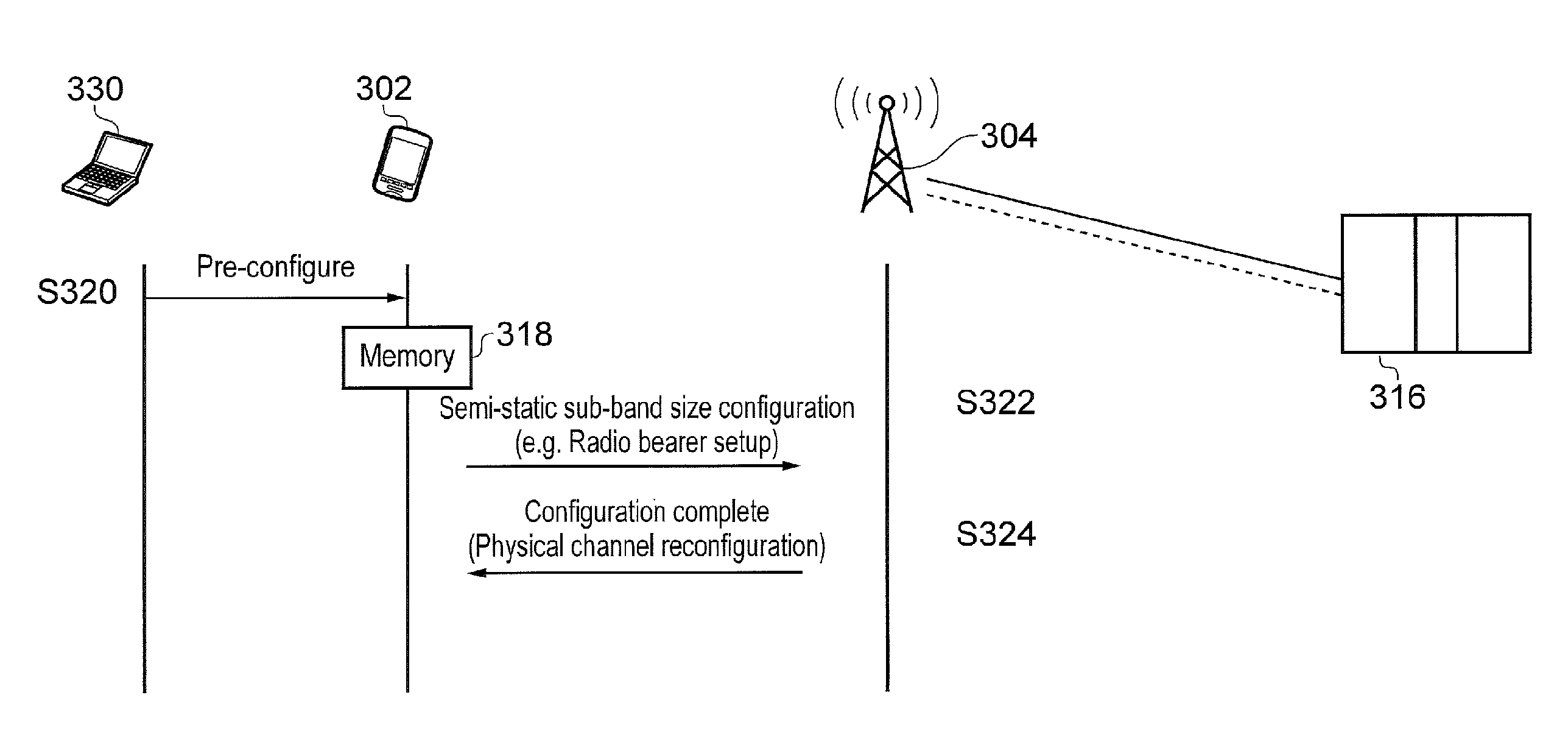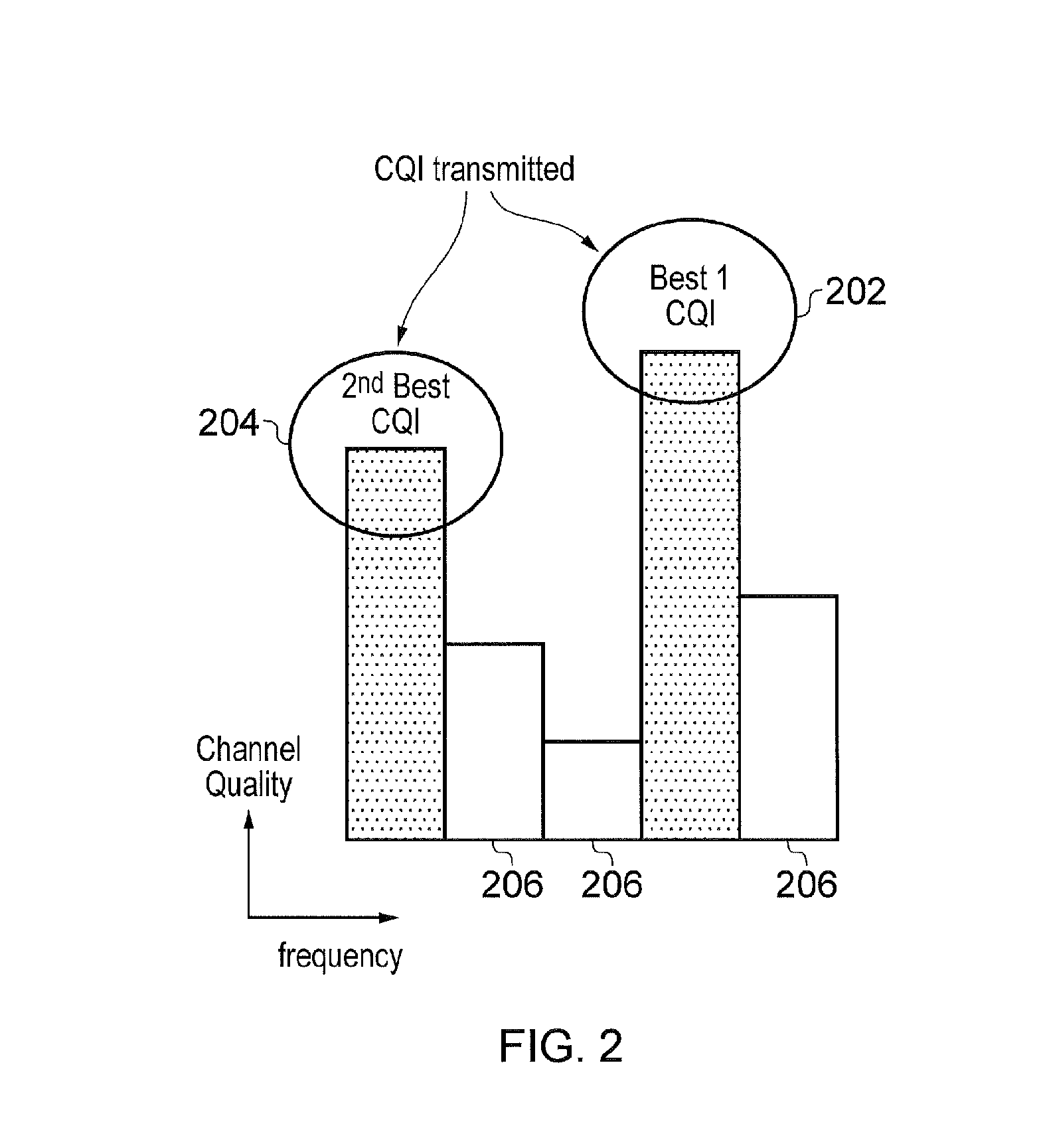Method and apparatus for reporting channel state information in wireless communication system
a wireless communication system and channel state technology, applied in the field of telecommunications equipment, can solve problems such as radio technology development, and achieve the effects of improving throughput, improving channel state information, and improving channel state information
- Summary
- Abstract
- Description
- Claims
- Application Information
AI Technical Summary
Benefits of technology
Problems solved by technology
Method used
Image
Examples
embodiment 1
[0102]In this embodiment, a new sub-band size is introduced in case of narrow band (e.g. 6RBs bandwidth).
[0103]A convenient and suitable size of frequency range for this narrow band sub-band is a RB (1 resource block=12*15 kHz=180 kHz), which is the baseline of resource allocation in LTE. As a result, for a virtual carrier bandwidth of 6RBs, this would give six sub-bands.
[0104]In one version of the fixed sub-band size case, this sub-band size may be defined in a table (Table 3). The benefit of fixed size and defined in specification is that there is no need for signalling.
Table 3the fixed sub-band size definition (examples)casesub-band size “k”Unit of kwideband6Resource blocksfixed sub-band (normal)1Resource blocksfixed sub-band (fine)1subcarriers
[0105]In a typical urban environment (e.g. delay profile=1000 ns), 1RB resolution might be sufficient. However, if larger delay profile (2000-5000 ns, i.e. complicated multipath case), a finer resolution might be better. As Table 3 indicate...
embodiment 2
[0110]In another embodiment, a semi-static configuration may be applied to the determination of a suitable sub-band size.
[0111]Semi-static means once the sub-band size is decided, it continues to be used until the situation is changed. For example, in case of smart meter, the value is configured at the meter install, there being no need to change the size after that under typical conditions. In general, if the MTC terminal is fixed or unlikely to move (e.g. smart meter), the sub-band size will not need to be changed often. The semi-static configuration method is also suitable for cases where a UE (not necessarily an MTC device) is stationary.
[0112]Compared to embodiment 1, the semi-static configuration of sub-band size needs to be aligned at least once between UE and eNodeB.
[0113]One simple way of defining sub-bands in these circumstances is to provide a parameter which has direct value of sub-band size. This is simple and adaptable to any case.
[0114]If there are a limited number of...
embodiment 3
[0131]In the third embodiment, the preferable sub-band size depends on characteristics of propagation environment, typically time-varying.
[0132]Three sub-band size selection methods are considered: the “delay spread” method; the “subcarrier SINR” method; and a method based on PDSCH Tx mode. Each adapts the recommended sub-band size to suit the time-varying ambient radio propagation environment.
[0133]Based on Time Domain Measurement (the Delay Spread)
[0134]The “delay spread” method directly estimates the coherence bandwidth from delay spread by measurement.
[0135]As noted above, delay spread is the root-mean-square value of the weighted average multipath delay. In providing a channel estimation function, the UE receiver finds the multipath and averages the strength and time dispersion. Based on this value, the coherence bandwidth is calculated and a suitable sub-band size is selected depending upon the inferred fading conditions (i.e. whether there is flat or frequency selective fadin...
PUM
 Login to View More
Login to View More Abstract
Description
Claims
Application Information
 Login to View More
Login to View More - R&D
- Intellectual Property
- Life Sciences
- Materials
- Tech Scout
- Unparalleled Data Quality
- Higher Quality Content
- 60% Fewer Hallucinations
Browse by: Latest US Patents, China's latest patents, Technical Efficacy Thesaurus, Application Domain, Technology Topic, Popular Technical Reports.
© 2025 PatSnap. All rights reserved.Legal|Privacy policy|Modern Slavery Act Transparency Statement|Sitemap|About US| Contact US: help@patsnap.com



